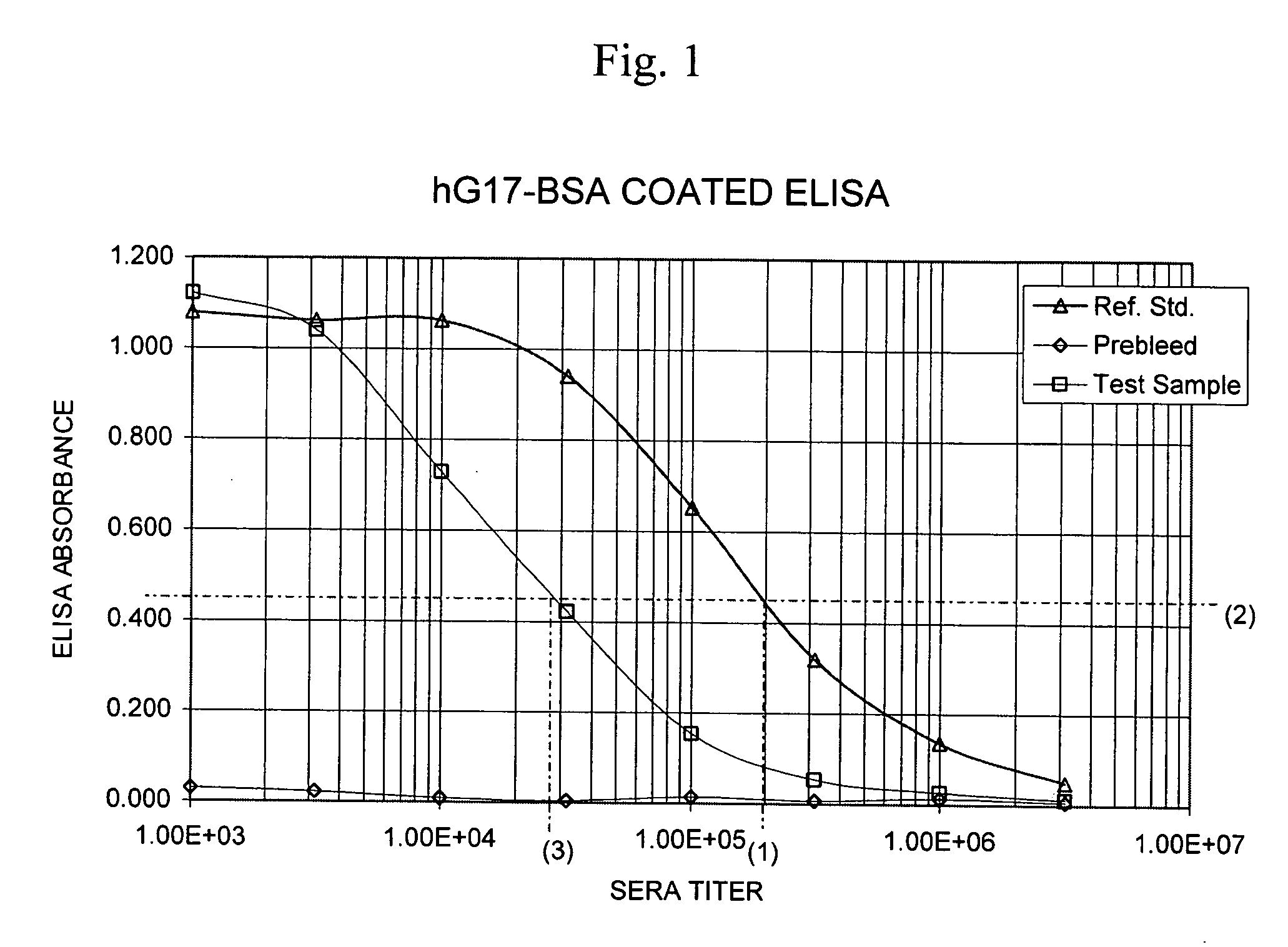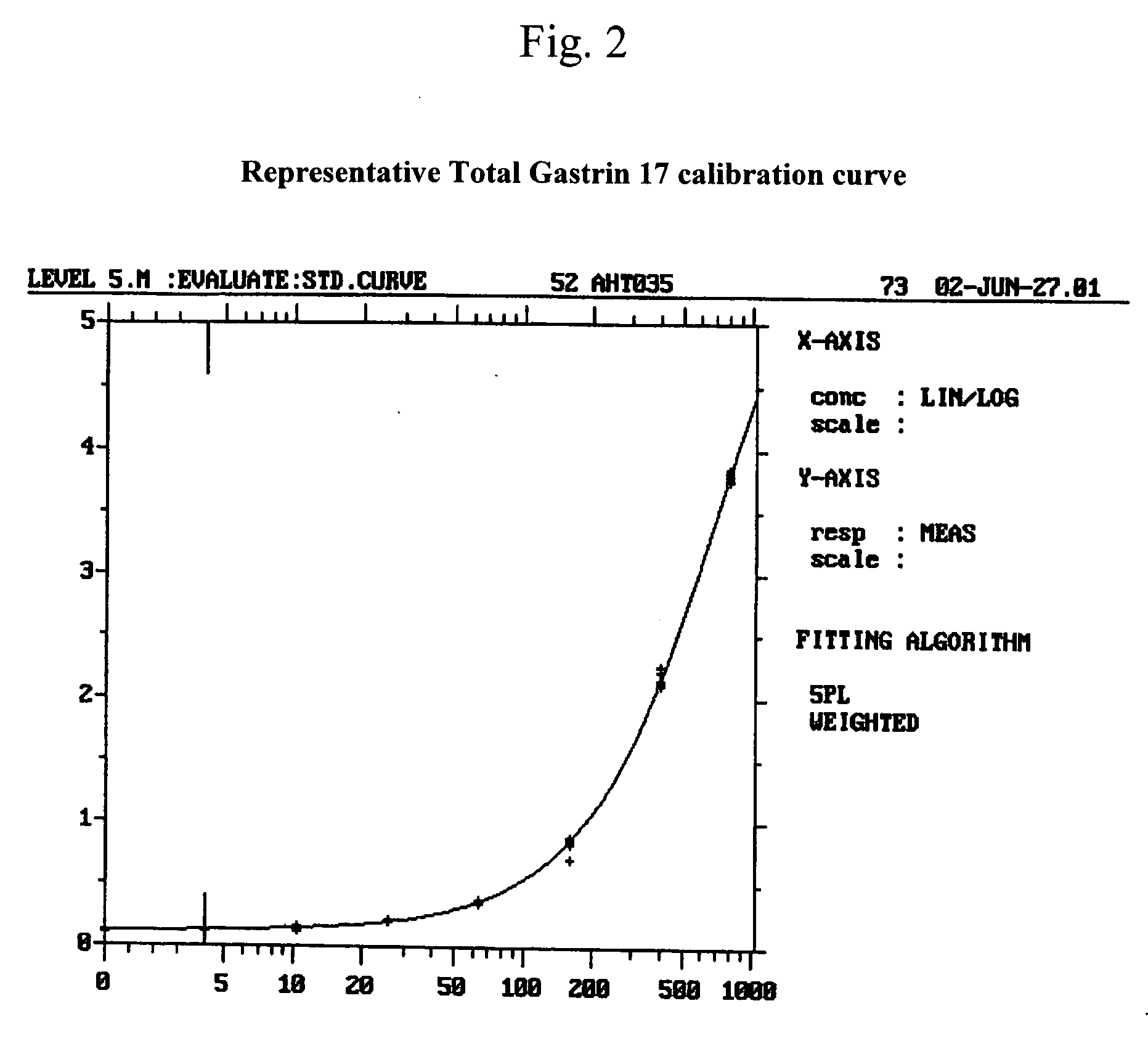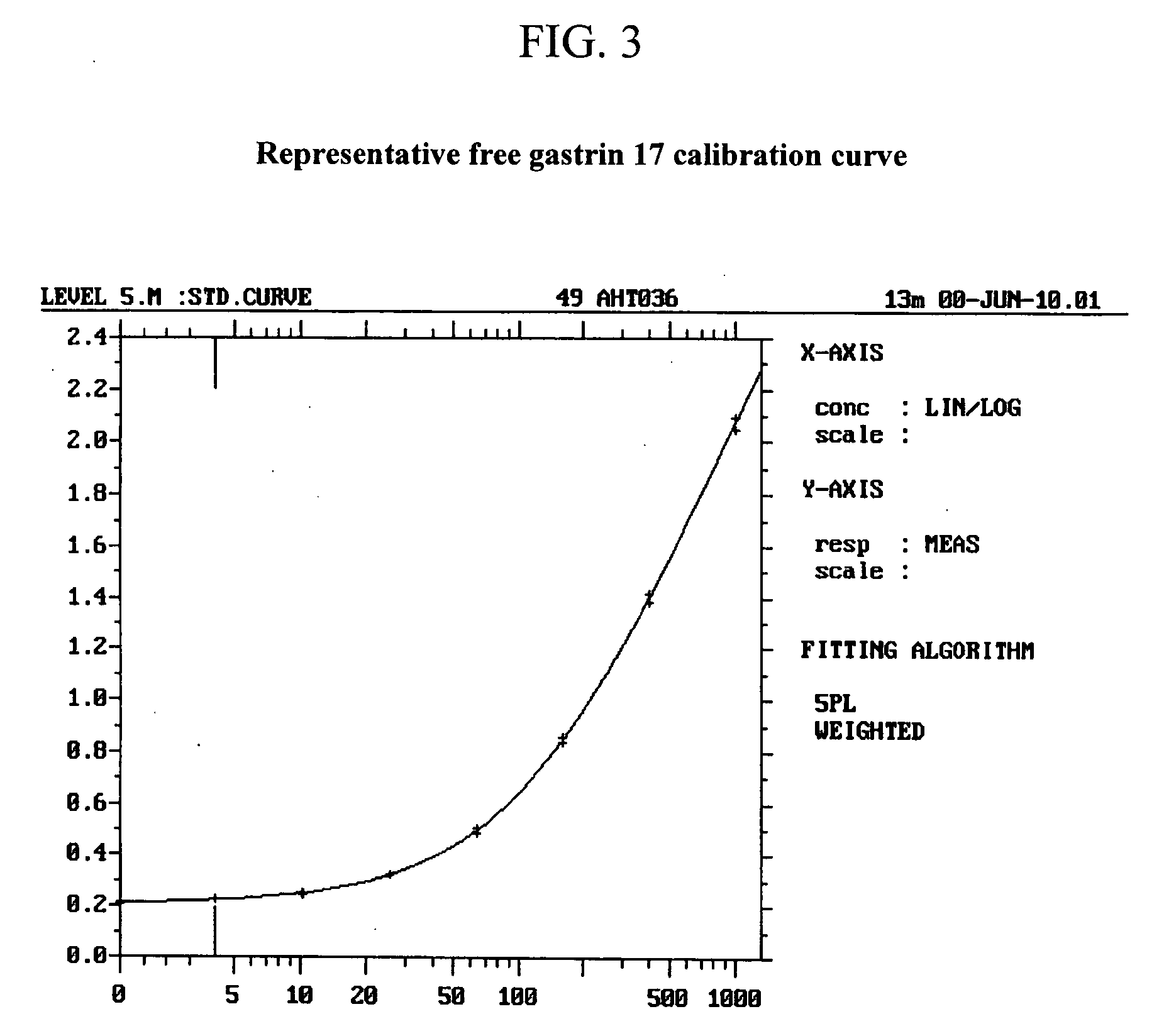Monoclonal antibodies to gastrin hormone
a gastrin hormone and monoclonal antibody technology, applied in the field of monoclonal antibodies to gastrin hormone, can solve the problems of limited antibody production capacity over the lifespan, difficulty in separately detecting and quantifying each of the several forms of gastrin hormone, and incomplete understanding of the effects of gastrin hormone on different tissues in normal and diseased tissues
- Summary
- Abstract
- Description
- Claims
- Application Information
AI Technical Summary
Problems solved by technology
Method used
Image
Examples
example 1
Production of Monoclonal Antibodies to the C-Terminal of Human G17
[0083] The peptide, CSSEEAYGWMDF-NH2 (SEQ ID NO: 10) containing the linker-spacer (-Cys-Ser-Ser-) sequence followed by the amino acid sequence including C-terminal epitopes of human G17 and G34 (-EEAYGWMDF-NH2, SEQ ID NO: 6) was synthesized commercially by standard solid phase peptide synthesis methodology.
[0084] The peptide was incorporated into an immunogen to induce antibodies to the C-terminus of G17 / G34 as follows: The peptide was first covalently linked to diphtheria toxoid (“DT”) to yield a peptide-carrier conjugate. The number of peptide units substituted on each DT carrier was determined and finally, the conjugate was formulated as an immunogen. The techniques used were as described in U.S. Pat. No. 5,622,702.
[0085] Briefly, the chemical conjugation of peptide to carrier was conducted with the heterobifunctional cross-linker, epsilon-maleimidocaproic acid N-hydroxysuccinimide (ε-MCS). The conjugate was pur...
example 2
Selection of Monoclonal Antibodies with Superior Performance in an Immunoenzymometric Assay for Total (Bound Plus Free) G17
[0089] A method for measuring the total quantity of G17 in samples of a biological fluid, such as human plasma that may contain anti-gastrin antibodies has been developed and is described in co-filed patent application U.S. Ser. No. 10 / ______. Briefly, the method includes adding to a test sample of a biological fluid an excess amount of a peptide comprising amino acids 1-8 of human G17 (human G17(1-8) displacement peptide), to displace any gastrin hormone that may be present and bound through an N-terminal epitope to G17 N-terminal epitope specific antibodies that might also be present in the test sample. After an incubation period, the sample mixture containing the displacing peptide is added to a 96-well ELISA plated coated with capture antibody directed to the C-terminal of G17. Following incubation, the plate is washed to remove the displacing peptide, and ...
example 3
Isolation and Characterization of a Monoclonal Antibody to the N-Terminal of Human G34
[0102] Hybridomas producing MAb to the amino terminal end of G34 were produced as described in Example 1 for the production of MAb against the C-terminal end of G17 and G34, except for the composition of the peptides used to immunize the spleen cell donor mice against the N-terminal end epitope of G34 and to select for Mab specific for the N-terminal end epitope of G34. To induce antibody response against N-terminal end epitope of G34, the peptide pELGPQGRPPPPC (SEQ ID NO: 12) was conjugated to DT to form an immunogen. This peptide was similarly linked to BSA to form the target antigen for use in the ELISA to identify Mabs against the N-terminal end epitope of G34. This fusion was designated number F401.
[0103] F401 yielded MAb 401-2. The specificity for G34 was proven by inhibition ELISA, wherein it was shown that only G34 peptide inhibited binding of the MAb 401-2 to the peptide immunomimic of t...
PUM
| Property | Measurement | Unit |
|---|---|---|
| volume | aaaaa | aaaaa |
| pH | aaaaa | aaaaa |
| concentration | aaaaa | aaaaa |
Abstract
Description
Claims
Application Information
 Login to View More
Login to View More - R&D
- Intellectual Property
- Life Sciences
- Materials
- Tech Scout
- Unparalleled Data Quality
- Higher Quality Content
- 60% Fewer Hallucinations
Browse by: Latest US Patents, China's latest patents, Technical Efficacy Thesaurus, Application Domain, Technology Topic, Popular Technical Reports.
© 2025 PatSnap. All rights reserved.Legal|Privacy policy|Modern Slavery Act Transparency Statement|Sitemap|About US| Contact US: help@patsnap.com



